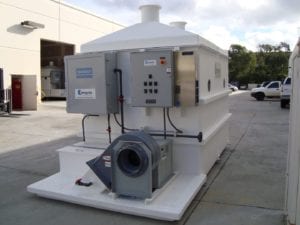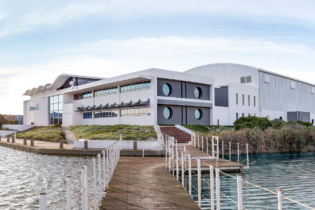Odour control has moved from an afterthought to a primary design consideration for most collection and treatment facilities.
By Annejan Visser, process engineer at QFS Intensive urbanisation, incremental population growth, and seasonal temperature rises within metropolitan areas have increased the likelihood of exposure to odour generating facilities. This, together with the additional need for corrosion control of waste pipelines and the health and safety of municipal personnel, has made odour control requirements more prevalent in recent times. Quality Filtration Systems (QFS) identified the local need for improved odour control measures at wastewater treatment plants and other odour generating sources, which led to the company concluding a technology partnership with Integrity Municipal Systems (IMS). Based in Poway, California, IMS is an odour-specific engineering company with over 20 years’ experience devoted to the design, manufacture and supply of innovative, preassembled odour solutions for the water and wastewater industry. Cost-effective vapour phase technologies available include:- biofiltration – a biological technology with low operating costs (I-BOxTM Biological Oxidation Systems)
- wet or chemical scrubbing – a reliable technology for chemical treatment
- adsorption – a well-established technology using dry media (BCS Series bulk carbon adsorbers).
- required air flow or ventilation rate
- the peak and average hydrogen sulfide (H2S) concentrations in the odorous air
- the required level of odour removal (concentration of H2S and odour units).
- unitary construction of the treatment vessel
- a fibreglass exhaust fan with longer durability
- vessel deck for ease of access to equipment.
- water regenerable
- naturally high in minerals
- sulfur selective.








